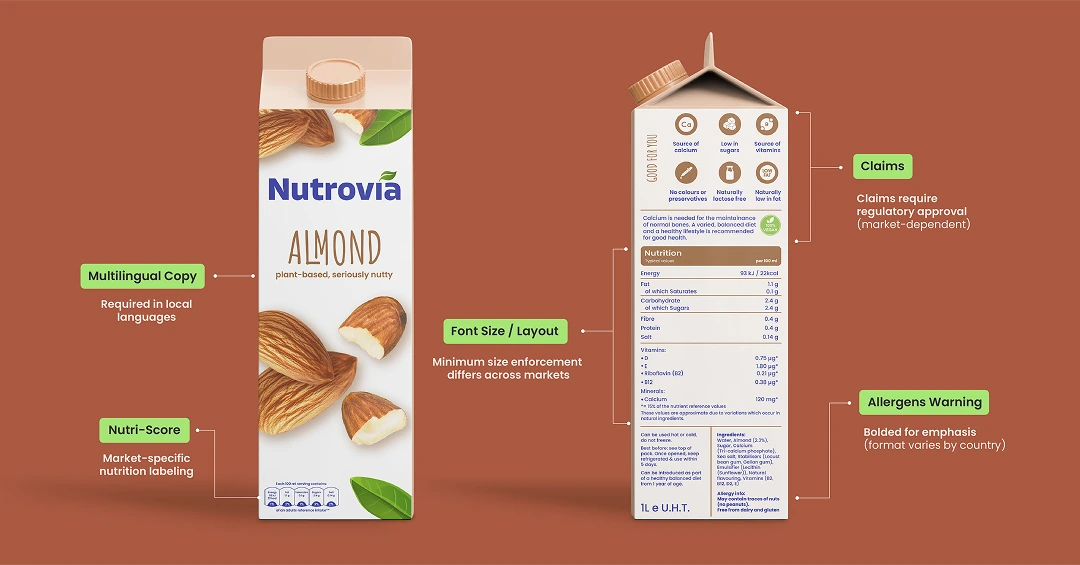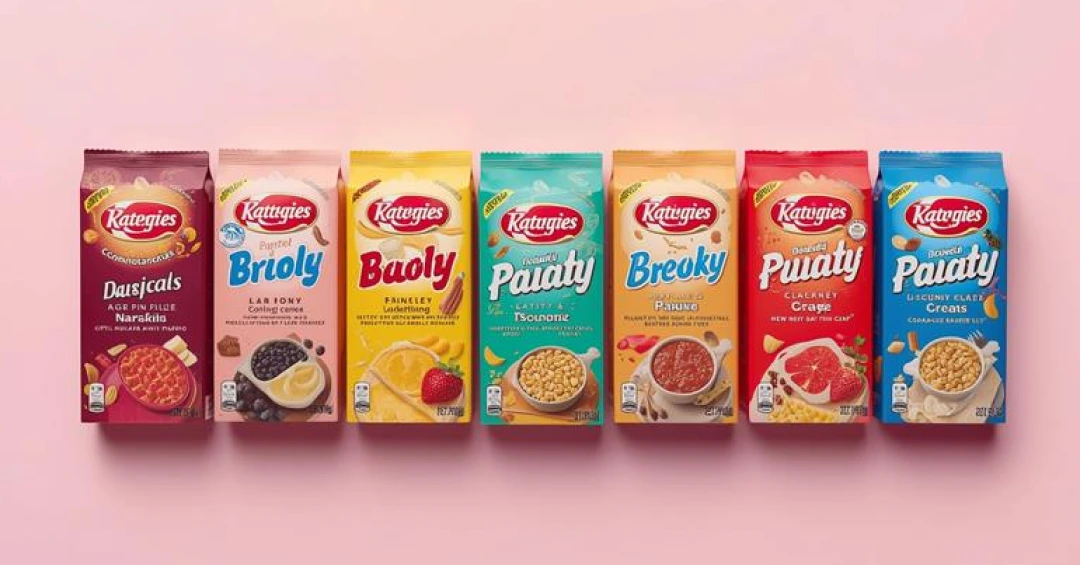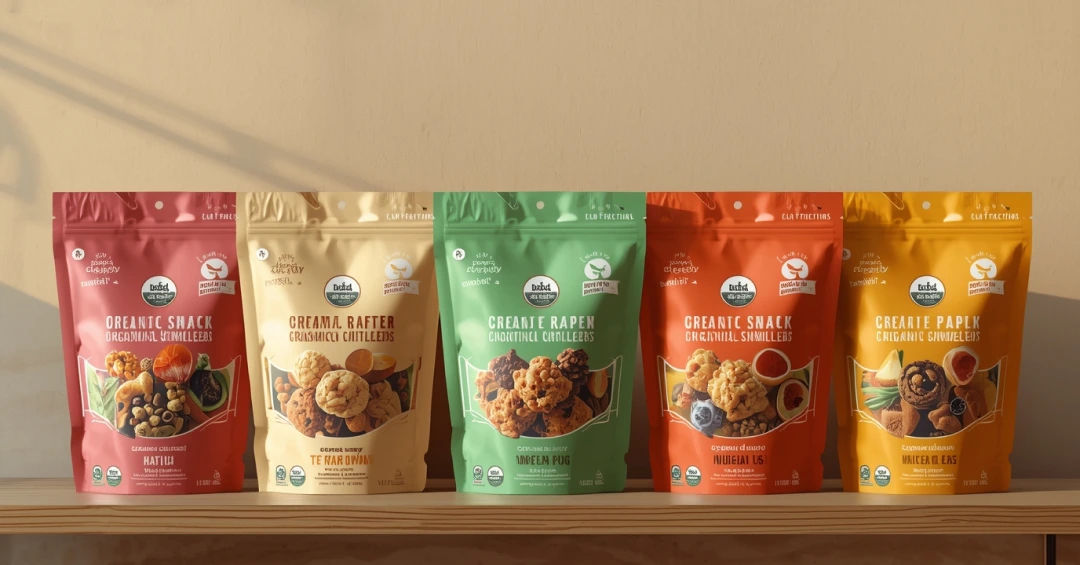Introduction
For CPG brands operating in the EU, multilingual packaging isn’t just a requirement, it’s a constant operational and compliance challenge. With 27 countries, 24 official languages, and localized labeling enforcement, even a single product often requires multiple label versions, each tailored to national laws and consumer expectations.
If you're managing this complexity, you're not alone. Many packaging, regulatory, and marketing teams across Europe are stretched thin trying to keep up with translation accuracy, ever-changing regulations, and market-specific artwork variants.
This blog explores practical ways to bring structure to that complexity, including minimizing errors, aligning regional teams, and accelerating launches with purpose-built tools like ManageArtworks.
Key Challenges of Packaging in the EU Market
While overarching regulations such as EU Regulation 1169/2011 on food information exist, each member state interprets and enforces labeling rules differently creating a highly fragmented compliance environment.
Here’s what makes it especially complex for CPG brands:
- Language Requirements: Mandatory labeling in local official languages is required in nearly every country. For products sold broadly, this often results in labels printed in three or more languages.
- Diverging Labeling Preferences: Member states often adopt divergent systems—for instance, France promotes usage of Nutri‑Score, whereas Italy discourages it and enforces alternative nutrition labeling approaches.
- Allergen Formatting Variances: While allergens must be highlighted (bolded or contrasted), the enforcement around presentation formats—such as font style or background color—differs across jurisdictions.
- Visual and Layout Standards: Expectations for font size, icons (recycling, sustainability), and layout differ from country to country, making a one‑size‐fits‑all design unrealistic.
- Frequent Regulation Updates: National changes to health claims, sustainability marks, or labeling symbols are common, forcing packaging teams to respond quickly and consistently.
For many CPG brands, a single SKU may require 10‑15 regional label variants—each needing distinct review, approval, and proofreading across markets. Multiplied across dozens (or hundreds) of products, the operational complexity and risk escalate quickly.
Where Brands Typically Go Wrong
Many CPG brands still manage multilingual packaging with outdated processes. They often copy translations from old files or email threads, rely on PDFs and spreadsheets for approvals, and juggle regional teams that don’t share systems. This leads to errors, duplicated effort, and conflicting label versions.
Last-minute changes often cause print delays, while missing audit trails make it hard to track who approved what. And when regulations change, scattered teams struggle to react quickly putting the brand at risk of non-compliance.
Without centralized tools and structured workflows, packaging turns into a bottleneck that slows launches and creates risks which are entirely avoidable.
How Artwork Management Software Can Simplify EU Labeling
For CPG brands, the complexity of labeling across the EU isn’t just about translation—it’s about regulatory nuance, market-specific claims, and aligning multiple teams across borders. Without the right systems in place, this quickly becomes chaotic.
Modern artwork management platforms bring much-needed structure and visibility to these processes. Here's how they help brands navigate EU packaging complexity with confidence:
- Centralized Pack Copy Management
Instead of juggling spreadsheets or email threads, structured copy libraries allow teams to manage approved ingredients, nutrition panels, and legal text centrally along with multilingual variants and content-level approvals. - Bulk Edits Across SKUs and Markets
A regulatory update or label change doesn’t have to trigger a manual update across hundreds of files. With smart bulk editing tools, updates can be made once and reflected across SKUs with built-in review checkpoints to maintain control. - Design-Ready Copy Integration
Approved copy can flow directly into artwork files using plugins that integrate with design tools like Adobe Illustrator. This reduces dependency on copy-pasting and ensures text remains accurate in layout, preserving formatting and brand consistency. - Tailored Approval Workflows
Different markets may require different regulatory reviews. Flexible workflow templates let teams route approvals by market, assign parallel or serial tasks, and avoid delays through intelligent rejection loops and stakeholder assignment. - Proofing and Version Control
Built-in proofing tools within artwork management software help teams compare versions of artwork, especially helpful for spotting mismatched translations or layout shifts in multilingual files. This speeds up review cycles and prevents last-minute errors at the print stage. - Centralised Asset Management
From dielines to logos, an integrated asset library ensures everyone is working with the latest approved files. With audit trails and access controls, this minimizes compliance risk and creative inconsistencies. - Notifications, Delegation, and Audit Logs
As packaging moves through teams, automated alerts, escalations, and delegation tools keep the process on track. Complete audit logs track every approval and change for compliance and traceability.
For CPG brands handling multilingual, multiregional packaging, structured artwork management doesn't just simplify processes—it enables scaling, drives consistency, and reduces compliance risks across markets.
Conclusion
Managing EU packaging doesn’t have to mean managing chaos. With the right artwork management system, teams can collaborate more efficiently, reduce rework, and stay compliant across markets.
If your team is still relying on disconnected tools and manual workflows, it may be time to explore a better way. ManageArtworks helps CPG companies streamline their multilingual packaging process, with structured systems built for regulated, cross-functional environments like the EU.
Book a free demo to see how ManageArtworks simplifies multilingual packaging across the EU.





.webp)
















